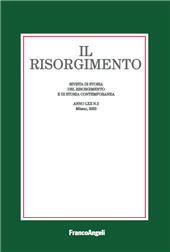Le vendite d'arte della nobiltà romana : una base per il collezionismo europeo
70-94 p.
Durante il dominio francese nella Penisola italiana (1797-1814), le famiglie nobili dovettero vendere pregevoli opere d'arte per pagare tasse e debiti di guerra. Soprattutto gli esperti d'arte britannici acquistavano dipinti rinascimentali e barocchi e li mettevano all'asta. Anche intere collezioni passarono di mano. Gli acquirenti di questi oggetti erano principalmente ricchi inglesi, ma anche membri della famiglia Bonaparte e funzionari napoleonici protetti dall'imperatore, che costruirono in pochi anni preziose collezioni, rivendute dopo il 1815. I vincitori di Napoleone colsero l'occasione per acquisire oggetti d'arte molto costosi, con l'idea di dimostrare il loro potere e aumentare il loro prestigio tramite le loro collezioni. Principi e re gareggiavano nella costruzione di musei nelle loro residenze, realizzati sul modello del Louvre. [Testo dell'editore].
During French rule in the Italian peninsula (1797-1814), noble families had to sell valuable works of art to pay taxes and war debts. Above all, British art experts bought Renaissance and Baroque paintings and had them auctioned. Entire collections also changed hands. The buyers of these exquisite items were primarily wealthy Englishmen, but members of Napoleon's family and officials protected by Napoleon also built up valuable collections in just a few years, which they had to sell again after 1815. This time, the winners of the anti-Napoleonic coalition wars took their chance to acquire very expensive art objects. Everyone involved in the market wanted to demonstrate their power and increase their prestige with their collections. Princes and kings vied for the construction of museums in their residences, which were modeled on the Louvre. [Publisher's text].
Forma parte de
Risorgimento : rivista di storia del Risorgimento e di Storia Contemporanea : LXX, 2, 2023-
Artículos del mismo número (disponibles individualmente)
-
Información
Código DOI: 10.3280/RISO2023-002003
ISSN: 2465-0765
MATERIAS
KEYWORDS
- mercato dell'arte, nobiltà, famiglia Bonaparte, musei, prestigio, collezioni
- art market, nobility, Napoleon's family, museums, prestige, collections


